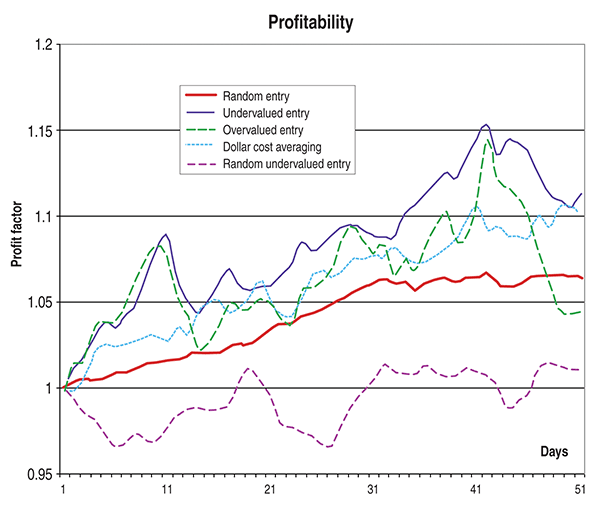INDICATORS
Enhancing And Nonenhancing
The Chartmill Value Indicator
Part 3
by Dirk Vandycke
In the final article of this series, you’ll find more ways to apply the Chartmill value indicator and determine if it enhances the indicators you already use.
The Chartmill value indicator (CVI) is a short-term oscillator which, like dozens of other oscillators, tries to capture overbought and oversold situations. Because it is created using a statistical normalization procedure, it is unlike most other well-known oscillators. For one, it doesn’t suffer from the stickiness that keeps other range-bound oscillators in overbought and oversold zones while a strong trend is developing. Second, the CVI copes nicely with the lag that moving average–based oscillators have. Finally, because it doesn’t use any parameters, it is objective in its definition and hence is ideal for algorithmic implementation in software.
Hence, it becomes necessary to have an objective interpretation of the CVI. In this article, you will find out if the CVI has any real and statistically significant usefulness.
RECAP
The CVI going below -8 (two standard deviations) is considered oversold or short-term undervalued, while having it above +8 would be overbought and short-term overvalued. If necessary, you can consider smaller intervals to increase the number of samples like [-7, +7], as [-8, +8] might give too few signals while backtesting. In addition, the interval used doesn’t have to be symmetrical. In a bull market, you could consider anything below -6 already oversold. But the indicator seems to perform well using [-8, +8]. The changes in the interval are merely to drive up sample size in backtests and generate more signals.

FIGURE 1: COMPARISON OF DIFFERENT ENTRY SIGNALS WITH AN UNDERVALUED CVI ENTRY SYSTEM. Buying short-term undervaluation (the Chartmill value indicator below -7) seems to pay off against other entry strategies. Here, a random entry system is used as a benchmark.
In my previous article, I showed that selling while an indicator is overvalued may help a short trade. Likewise, long trades can be more successful when you enter the trade when the CVI is undervalued. Look at Figure 1. Pure entry systems (that is, nontechnical entries) are compared during a bull market. Clearly, the entry system based on entries on undervaluation, as measured with the CVI, seems to make a difference.
Excerpted from an article originally published in the March 2013 issue of Technical Analysis of Stocks & Commodities magazine. All rights reserved. © Copyright 2013, Technical Analysis, Inc.
Return to Contents
